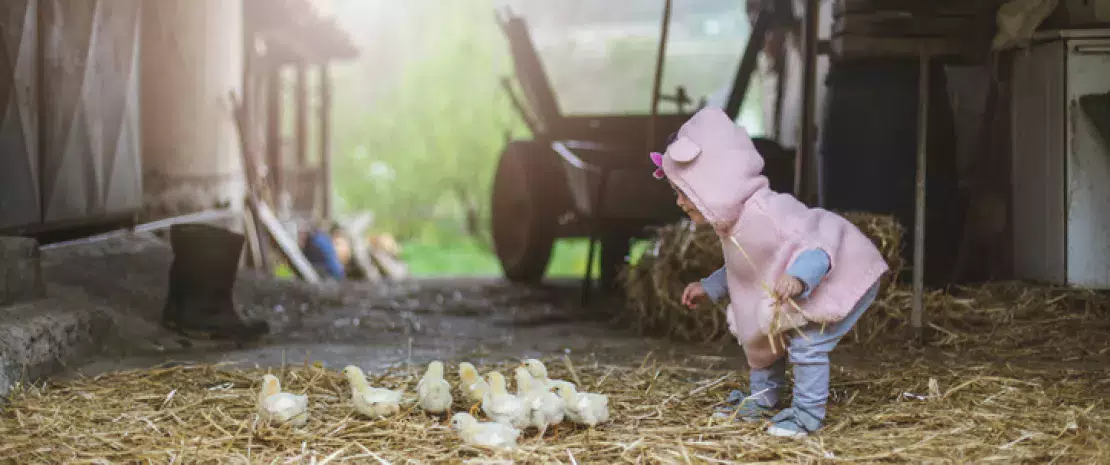Asthma: breathing in some fresh air on the farm!
Growing up on a farm is thought to have a protective effect against asthma. The key period appears to be the first 12 months of life, thanks in part to an environment beneficial to the gut microbiome, and to the existence of a gut-lung axis.
- Learn all about microbiota
- Microbiota and related conditions
- Act on your microbiota
- Publications
- About the Institute
Healthcare professionals section
Find here your dedicated section
Sources
This article is based on scientific information

About this article
With many city dwellers currently considering leaving the city for the countryside, an article on the protective effect against asthma of growing up on a farm appears to support this choice. The authors had previously demonstrated a protective role for microorganisms coming from inside the home. In this new study, they focus on a key period in childhood development: the first year of life. Even before toddlers blow out their first candle, exposure to the outdoor environment shapes the development of their gut microbiota. This process may have long-term consequences, including the risk of developing asthma.
Farm 1, asthma 0
To test their hypothesis, the researchers followed a population of nearly 1,000 children living in rural areas of Europe, half of whom were born on farms, and 8% of whom became asthmatic between the ages of 0 and 6. Stool samples were taken at 2 and 12 months, with changes in the gut microbiome assessed over this period.
The fields’ secret: a more mature microbiome
The results confirm it: spending our first year on a farm reduces the risk of developing asthma later in childhood. But why? 19% of the farm’s protective effect seems to be linked to a more mature gut microbiome. The researchers also identified certain bacterial groups that were particularly involved. These are thought to produce a beneficial compound, butyrate, known for its anti-inflammatory properties. At the same time, while no specific bacterium stood out based on its protective effect, some did appear to be associated with an increased risk of asthma.
These results support the idea of a communication axis between the gut and the lungs, similar to the well-known gut-brain axis. They also encourage the use of preventive measures for respiratory and allergic diseases during the first year of life. In addition, they might further incite certain urban families to return to nature or at least to adopt a less overly hygienic lifestyle.




